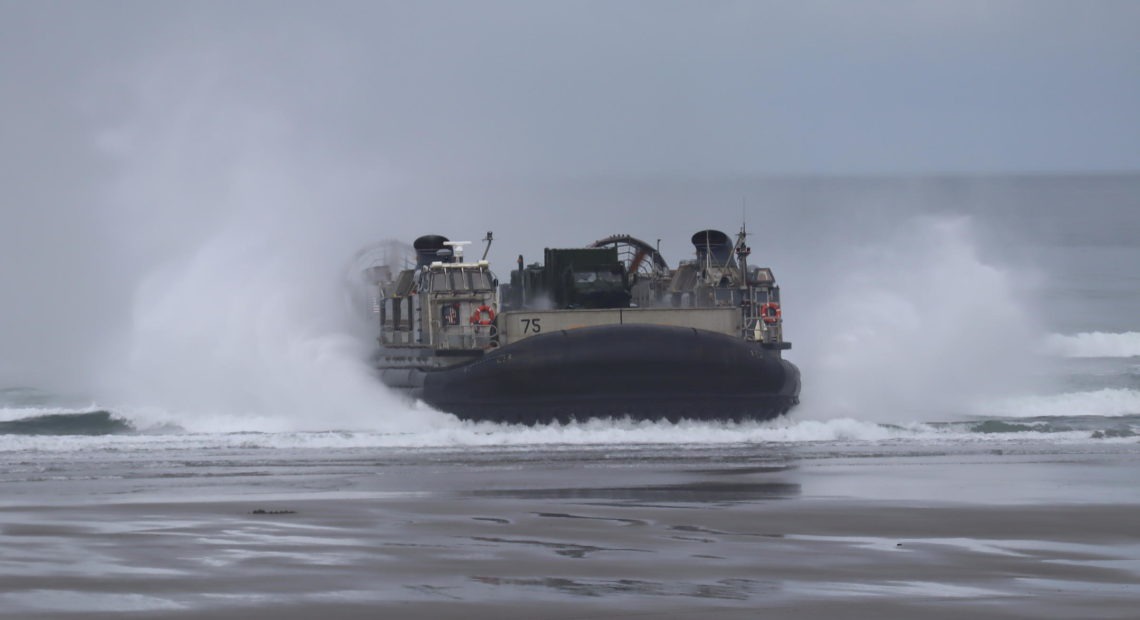
Navy Hovercrafts Could Be Hulking Lifesavers After ‘The Big One’ Hits Northwest
LISTEN
People visiting or living along the Pacific Northwest coast may be completely cut off after “The Big One” —the feared magnitude 9.0 Cascadia earthquake and tsunami. For that reason, the U.S. Navy has been scouting landing sites along the coast for disaster relief delivery by sea. The quake preparations ticked up a notch on Monday, with a practice delivery of supplies using two hulking Navy hovercrafts.
The Navy and Clatsop County demonstrated what relief by sea could look like. It induced big smiles despite the overwhelming noise. Military and law enforcement personnel passed out free earplugs to a large crowd of onlookers, who gathered to watch at Sunset Beach State Recreation Site on the northern Oregon Coast.
“These are really big vehicles,” marveled Astoria resident Lori Miller, who sat in a beach chair as the spray and sand from the hovercraft settled nearby. “This was a really neat show. It was so fun to watch.”
Miller acknowledged the arrival of Navy ships would be a sight for sore eyes in the aftermath of a real earthquake and tsunami. Training scenarios used by regional emergency managers assume that ports, highways and bridges along the Northwest coast will be severed along with communication, electricity and fuel resupply.
The Navy launched the two hovercrafts from a 634-foot mothership about three miles offshore, the amphibious assault ship USS Anchorage. The hovercrafts plowed through the surf right up onto the hard-packed beach near Camp Rilea.
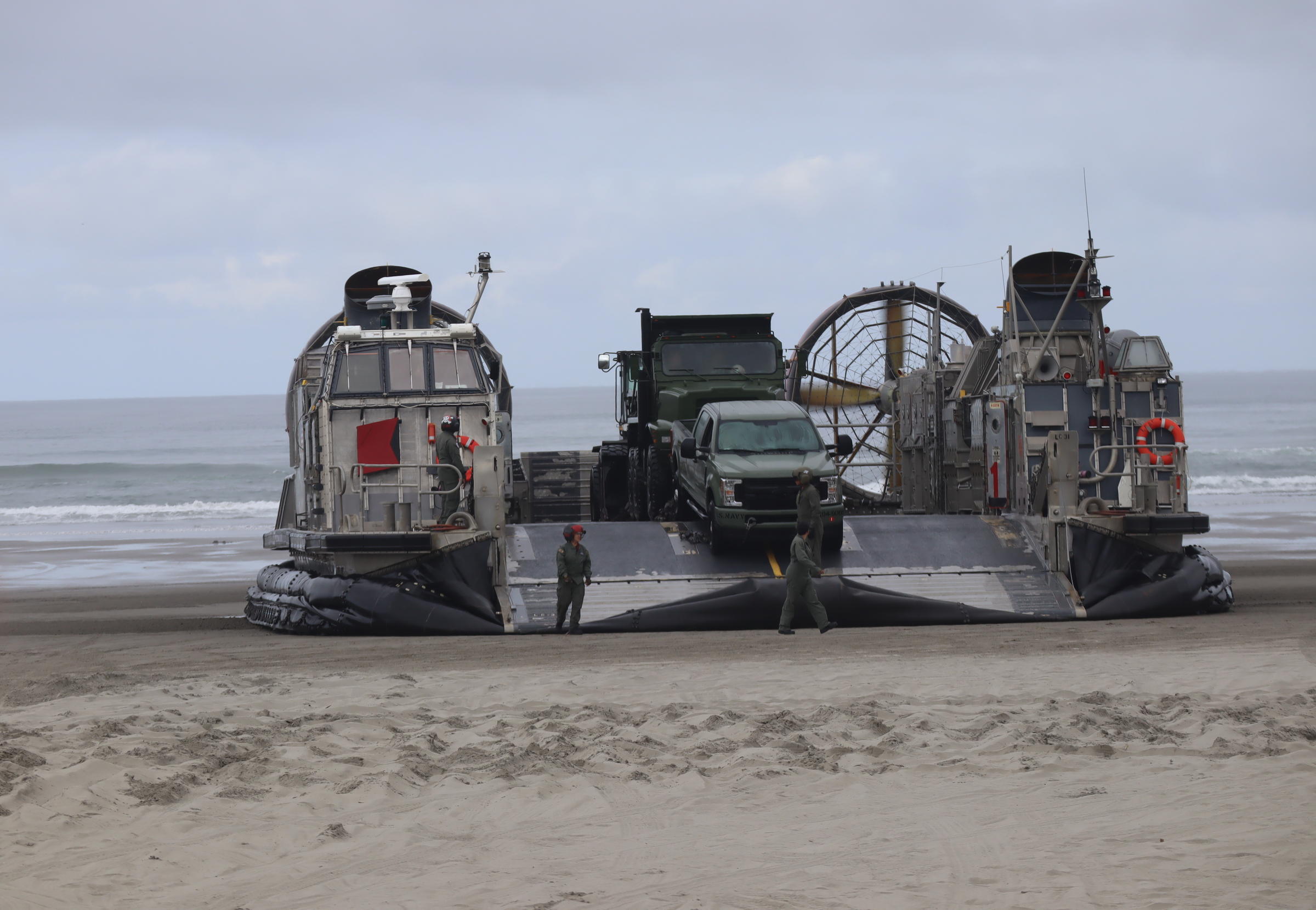
Navy hovercrafts deliver equipment, meant to clear roadways, during a mock Cascadia earthquake preparedness demonstration Monday.
CREDIT TOM BANSE / NORTHWEST NEWS NETWORK
In this exercise, heavy road clearing equipment drove off onto land, but Lt. Cmdr. Chris McCurry says the Navy could bring a wide variety of supplies.
“Our ability to put vehicles and equipment anywhere along the coastline is something no one else can bring and we can do it quickly,” said McCurry, who grew up in Oregon before joining the Navy.
“To be able to come back here to see the Oregon coastline and to picture what it would be like to be able to provide emergency assistance of all types — whether it be water, food, industrial equipment, medical capabilities — it just makes me proud both of my state and the United States Navy that I’ve been a part of for 25 years,” McCurry said in an interview on the USS Anchorage’s flight deck.
A tour of the vessel for media and local elected officials included a briefing in the ship’s hospital. Maria Gozo, senior medical officer, said she could imagine caring for dozens of injured evacuees on board after a Cascadia megaquake.
“I’m trying to be prepared for it and with this set up I think we would be,” Gozo said, noting that such thoughts cause sleepless nights.
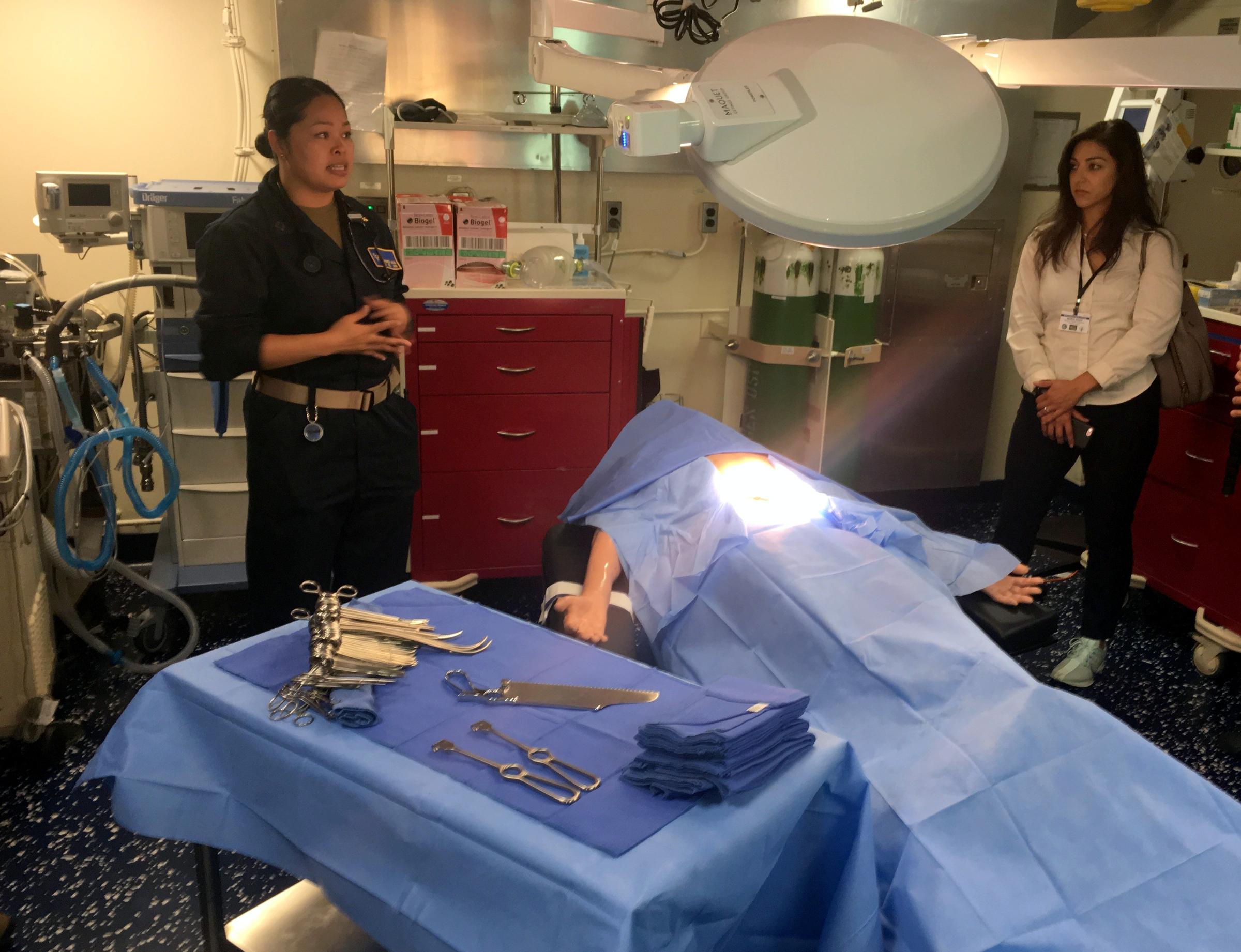
Senior medical officer Maria Gozo, left, stands in one of two operating rooms on board the USS Anchorage.
CREDIT TOM BANSE / NORTHWEST NEWS NETWORK
The big ships that the Navy envisions using for Cascadia earthquake relief, including the Anchorage, are homeported in San Diego. Cmdr. Brian Sauerhage from U.S. Third Fleet said it could take up to three days to get underway and another three to four to motor up the West Coast to the scene.
That time lag means an emergency kit and personal stockpiles of food and water are still the rule for Pacific Northwesterners, said Oregon Office of Emergency Management director Andrew Phelps.
“We certainly know it’s not going to be an immediate response,” Phelps said at the beach Monday. “The Navy is by no stretch a first response organization. They will be coming. But that’s really why we message to Oregonians to be ready for at least two weeks for any disaster, let alone a Cascadia earthquake and tsunami.”
Disaster preparedness volunteer Linda Kozlowski from Manzanita, Oregon, figures her coastal town will be isolated for a long time in the aftermath of a major earthquake. She took advantage of the demonstration to personally lobby the Navy officials.
“My goal now is to get them to Manzanita so we can do our own evacuation there,” Kozlowski said.
Kozlowski said she drew some comfort from watching the hovercrafts come ashore.
“Hopefully we’ll never use them, but knowing they are there and we have that capacity means you don’t have to worry,” Kozlowski said. “It’s all about being prepared, having a plan and then hoping you never have to use it.”
This week’s demonstration follows two prior practice amphibious landings a couple years ago in Newport, Oregon, and Westport, Washington. A Navy team returns to the Northwest coast later this month to survey more landing spots with the eventual goal of having options at the ready from Port Angeles in the north to Gold Beach in the south.
Sailors referred to the eye-catching hovercrafts employed in Monday’s exercise as LCACs, an acronym for Landing Craft, Air Cushion. Two LCACs fit snugly into a hangar-like well in the stern of the amphibious assault mothership. Sauerhage said a full-scale Cascadia earthquake response also could employ traditional landing craft that still resemble those used in the D-Day invasion, because those modernized utility vessels can deliver heavier payloads to shore.
The LCAC hovercrafts cost around $27 million apiece when the defense department acquired a fleet of them between 1984-2001.

Earplugs and goggles came in handy for spectators when the Navy hovercraft arrived and departed.
CREDIT TOM BANSE / NW NEWS NETWORK
Copyright 2019 Northwest News Network
Related Stories:
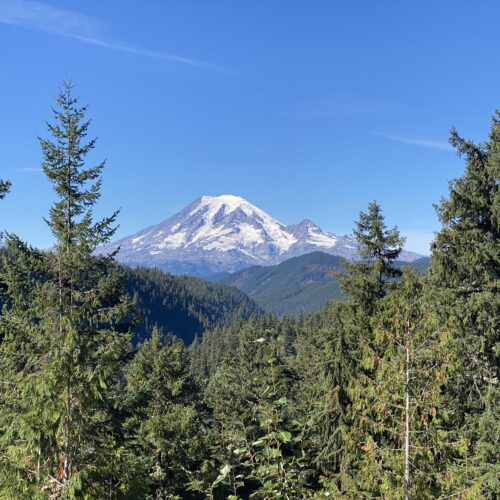
US Navy locates deceased Growler crew after crash near Mount Rainier
The U.S. Navy recently located the deceased Growler crew east of Mount Rainier. (Credit: Anna King / NWPB) Listen (Runtime :53) Read Editor’s Note: This story has been updated with
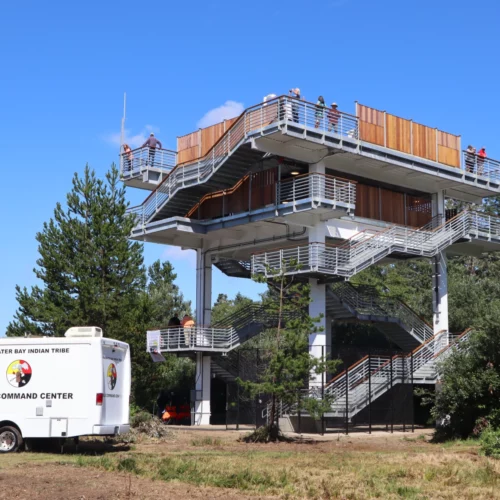
Coastal Washington Tribe Creates Higher Ground By Building Tsunami Tower, First Of Its Type Here
There is a new option to escape a tsunami if you’re on the southwest coast of Washington when the Big One strikes. The Shoalwater Bay Indian Tribe on Friday dedicated a 50-foot tall evacuation tower in Tokeland, Washington. Tribal leaders and the Federal Emergency Management Agency said the new tsunami refuge platform should be an example and inspiration for other vulnerable coastal communities.
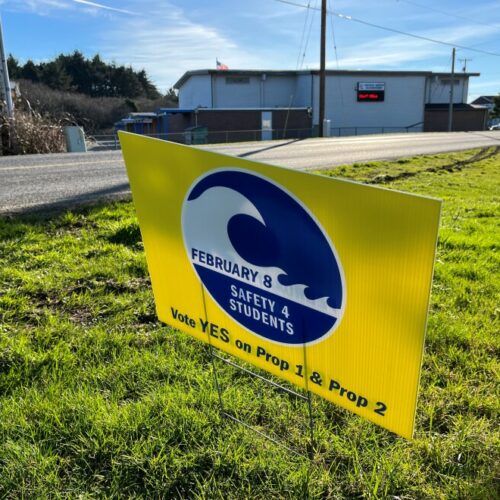
Earthquake Safety Of Schools On Ballot On Washington Coast Feb. 8, Possibly Statewide In November
The January 15 volcanic eruption near Tonga was a stark reminder of the threats posed by tsunamis. That’s long been a concern in the Pacific Northwest, where thousands of students go to school within reach of a large tsunami.
















